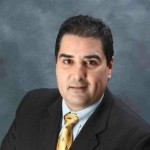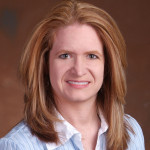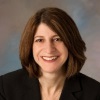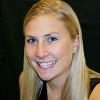30 Jan / 2016
SE Solutions Provides Scholarships to 3 Structures Students from Purdue University (2015)
SE Solutions was pleased to recently present scholarships to three Purdue Structures students to help defray the cost of their education. Aishwarya Puranam, Lucas Laughery and Francisco Pena were the recipients of the awards. This is the fourth year that SE Solutions has offered the scholarships.

Purdue University SE Solutions Structures Scholarship Winners (l to r): Aishwarya Puranam, Lucas Laughery,
and Francisco Pena
Aishwarya Puranam, an International student from Hyderabad, India, received her BSCE from Purdue University, and she will be finishing her MSCE this May (2016). She plans to continue on towards a PhD; her graduate research is on reinforcement limits in reinforced concrete flexural elements such as slabs, beams, and walls with regular and high-strength steel reinforcement.
Lucas Laughery received his BS degrees in civil engineering and architectural engineering from Missouri S&T in 2012. In 2013 he earned his MSCE from Purdue University with an emphasis on structural engineering. His doctoral thesis focuses on the seismic response of reinforced concrete (RC) frames containing high-strength longitudinal steel. For this, he conducted 20 tests of RC frames on an earthquake simulator. Lucas will finish his PhD this spring or summer.
Francisco Pena received his BSCE from Universidad del Valle at Cali-Colombia. He finished his MSCE last August (2015) with a 3.9 GPA at Purdue. He currently is working on a doctoral thesis related to developing a fragility analysis of structures subjected to ground motions in a rapid manner using limited computational resources.
Francisco was motivated to focus his study on mitigating and recovering structures from the damage caused by natural hazards because around 85% of the population of Colombia lives in areas of intermediate to high seismic risk. For this reason, he has been involved in the study of different alternatives for the rehabilitation of structures. Francisco plans to return to Colombia as soon as he finishes with his PhD, since this study has been funded by his government.
In an effort to “Pay It Forward,” SE University is happy to announce our “SEU Speaker Inspires” program in which our speakers can designate a charity/organization of their choice for SE University to make a donation to help improve our world.

Janel Miller
University of Wisconsin – Madison
In August 2015, Janel Miller from University of Wisconsin – Madison gave a talk on Designing Slides for Effective Project Presentations. She chose the Leukemia & Lymphoma Society (http://www.lls.org) for her SEU Speaker Inspires donation.
Thank you, Janel, for helping structural engineers with your SE University session, and for your designation of the Leukemia & Lymphoma Society as our SEU Speaker Inspires Organization of the Month!
[seublog]
04 Jan / 2016
SEU Speaker Inspires Organization of the Month: Delaware Valley Association of Structural Engineers (DVASE)
In an effort to “Pay It Forward,” SE University is happy to announce our “SEU Speaker Inspires” program in which our speakers can designate a charity/organization of their choice for SE University to make a donation to help improve our world.

Mike Mota, PhD, PE
CRSI
In December 2015, Mike Mota, PhD, PE from CRSI gave a talk on Vibration of Reinforced Concrete Floor Systems. He chose the Delaware Valley Association of Structural Engineers (DVASE – http://www.dvase.org) for his SEU Speaker Inspires donation*.
Mike said the following about DVASE, “DVASE offers a forum through educational activities for the advancement of the structural engineering profession in the Delaware Valley.”
Thank you, Mike, for helping structural engineers with your SE University session, and for your designation of DVASE as our SEU Speaker Inspires Organization of the Month!
*As DVASE cannot accept charitable donations, SE University purchased a supporting sponsorship to DVASE to contribute through the SEU Speaker Inspires program.
[seublog]
24 Dec / 2015
Engineers: What is the Work You “Can’t Not Do?”
by Sam Rubenzer, PE, SE
Recently I listened to Scott Dinsmore’s TEDx Talk, “How to Find Work You Love“, and could not help but think about how it could guide so many structural engineers and others in the Architecture and Engineering world. The talk defines how we need to figure out what work we truly want to do, then inspires us to pursue it.
One of Dinsmore’s closing thoughts is, “What is the work that you can’t not do?” This talk was certainly inspirational. Some of the ideas promoted from Live Your Legend are not always as sound (some I would outright disagree with), but I think there are several things to learn from the video. And the essence of the talk is a great stimulus for positive changes in your career. Also, the video stops just short of another important question to me which is so much larger than our specific career, “how do we have a career within our life or do we live in our career?” What type of projects do we pursue? Who do we work with? What is the purpose for why we are working in the first place?
- What types of jobs do we work on? Big and small, for profit and not for profit?
- By far, the most rewarding project I have worked on was a small roof system meant for some of the world’s poorest people. It was a collaborative effort to create both an affordable and a buildable shelter. Yes, there have been much more challenging and intellectually difficult projects. However, the small roof system was the most meaningful. Solving a complex roof system, understanding the true response to dynamic lateral loads, while considering the limited resources to build a robust structure in remote areas of the world was very challenging. However, to me, it was most fulfilling to create a design that would radically improve lives of people with limited resources. Much of our work can be categorized into improving people’s “wants”; this was improving people’s true “need” for a safe home.
- What project stands out as most fulfilling to you? Can you set a goal to pursue more projects that inspire you?
- If you’re like me and you are interested in more work in developing communities, you might find out it’s not always possible to choose those project types within your current organization. There are other non-profit companies that may work on the projects you would like to impact. It’s likely your organization supports employees working with these non-profit companies. A few examples are Engineers Without Borders, Engineering Ministries International, or Build Change.
- How did you come to do what you do?
- As engineers, I believe we likely all started out as problem solvers with a sense of responsibility to provide safe designs for people in our community – a basis of engineering ethics. Has this initial motivation morphed into only considering profit margins and retaining business? Both are important, but these two philosophies can become opposing forces. I think the recent economic woes certainly make this more challenging. We can not lose sight of our original purpose, passion, and ethics.
- Who you work with (this includes all colleagues, including your boss)? How do they impact your success? Do they want you to succeed as much or more than their individual success?
- Find those people that inspire you and support you. Surround yourself with them.
- Mentor programs within a firm is a great way to build strong relationships and morale within teams
- Becoming involved in the greater SE community also allows you to meet people that inspire and support you, such as local chapters of SEA, ASCE, SEI, or code committees.
- Find those people that inspire you and support you. Surround yourself with them.
- Who we work for: For me, this is an easy question as I am a man of faith, a husband to my beautiful wife, a father of three incredible children, an active community member, and I strive to be an active contributor to the global profession of structural engineers. For you, it might be slightly different, but ask yourself who you work for and why you work. This question alone inspires me to want to do my best at my company and in all those that I work for and with. Scott Dinsmore closes his talk by stating:
“I imagine a world where 80% of the world loved the work they do. What would that look like? What would the innovation be like? How would you treat those around you?… Ask yourself what is the work you can’t not do. Discover that. Live it. Not just for you but for all those around you.”
Recently, I read NCSEA President Brian Dekker’s article, “What on Earth is NCSEA Here For?” He talks about the goal for an organization meant to serve structural engineers. It caused me to ask, why am I a structural engineer? What am I here for, working in this engineering profession? I believe answering that question will guide me, and you, to live your structural engineering legends.
Sam Rubenzer, PE, SE, is Structural Engineer and Founder of FORSE Consulting. See www.forseconsulting.com.
Also contributing to this article are Cathleen Jacinto, PE, SE, and Stephanie Fontaine, both with FORSE Consulting.
In an effort to “Pay It Forward,” SE University is happy to announce our “SEU Speaker Inspires” program in which our speakers can designate a charity/organization of their choice for SE University to make a donation to help improve our world.
Throughout 2015, Betsy Werra from E.L.Werra Consulting presented SEU BIM forum sessions for SE University. She chose the National Alliance on Mental Illness (http://nami.org) for her SEU Speaker Inspires donation.
Betsy said the following about the National Alliance on Mental Illness, “Many people today have been affected with a mental illness condition but it seems our society does not understand how this affects all involved. My sister was diagnosed with Bi-polar at age 19, and it has been a continuing battle for her to take the right steps in healing her mind with the proper treatments that are available to her. Awareness, love, compassion, support, and willingness to take on the challenges to help a person with a mental illness is also extremely hard on family, friends, and the community. More needs to be done to help not just the individual but also the ones that love them and want to help them, and because of organizations such as NAMI, I know my sister has a chance.”
Thank you, Betsy, for helping structural engineers with your SEU BIM Forum sessions, and for your designation of the National Alliance on Mental Illness for your SEU Speaker Inspires Organization!
[seublog]
by Kristine Kussro
You never get a second chance to make a first impression. We have all heard this before and know how important first impressions are. This holds true for presentations as well. As a leader, you need to deliver your presentations and messages with great precision. What we do in business often comes down to how we work a room, how we engage with people, and how we communicate to get our message across. So what is the art of making an engaging and memorable presentation? Here are just a few key points to help you make that great impression when making a presentation.
Begin With the Unexpected
The first 30-60 seconds of a presentation are the most critical. The audience is critically scrutinizing you right from the start. You need to quickly set the expectations for yourself. You need to capture the attention of your audience immediately or you will be fighting an uphill battle for the rest of the presentation trying to engage your audience. A great example of grabbing your audience is Steve Job’s Commencement Address at Stanford University in 2005.
“I am honored to be with you today at your commencement from one of the finest universities in the world. Truth be told, I never graduated from college, and this is the closest I’ve ever gotten to a college graduation.”
Create a Strong, Clear Story
When you open with a personal story that relates to your topic, the audience is instantly drawn in. Everyone wants to hear a personal narrative of how you succeeded or even failed along the way, and how you rose above all adversity to get to where you are today. Steve Jobs continued his commencement address captivating his audience with his enthralling personal narrative.
“Today, I want to tell you three stories from my life. That’s it, no big deal-just three stories. The first story is about connecting the dots. I dropped out of Reed College after the first six months, but then stayed around as a drop-in for another eighteen months or so before I really quit. So why’d I drop out? It started before I was born…”
Less is More
Do not overwhelm your audience with an abundance of slides! Sometimes as engineers we tend to think that more information is better. The more slides the better! In the corporate world this is known as “death by slides”. This creates blank stares, people checking their phones, and sometimes an afternoon nap for your audience. Also, nothing kills a slide as much as clutter. Eye charts are not allowed! Make your slides clear and concise.
Know Your Audience
Do your homework. It is important that you spend time finding out who is in your audience. What are their main interests? Why are they coming to hear you speak? What are you giving them to take away that is of value? If you know your audience you will surely engage them. Make eye contact. The difference between a good presentation and a great presentation is when your participants feel like you are speaking directly to them. Give them a reason to come back.
Call to Action
So you have delivered a great presentation to an auditorium full of people and they are impressed! What now? Always allow several minutes for questions and answers. Take the time afterwards to stay and talk to people individually. And always make your twitter, website, and email address available for questions and comments that come up later. Always leave your audience wanting more!
Steve Jobs closed his commencement speech with the words “Stay Hungry. Stay Foolish.” This is great food for thought. It leaves the audience with a challenge. Never be satisfied and always push yourself. Strive to do things people say cannot be done.
Obviously, few of us will get the opportunity to give commencement addresses at places like Stanford University, but the basics of presenting still apply. If anyone has any unique attention grabbing presentation openers or creative ways to keep your audience engaged, please email them to me at Kristine.Kussro@LearnWithSEU.com.
To see Steve Job’s entire inspirational commencement speech, visit the following website: http://news.stanford.edu/news/2005/june15/jobs-061505.html
In an effort to “Pay It Forward,” SE University is happy to announce our “SEU Speaker Inspires” program in which our speakers can designate a charity/organization of their choice for SE University to make a donation to help improve our world.
In October 2015, Carol Drucker, SE, PE from Drucker Zajdel Structural Engineers gave a talk on Understanding Load Paths for SE University. She chose the Structural Engineers Foundation (http://seaoi.org/sef.htm) for the donation of the month.
Carol said the following about the Structural Engineers Foundation, “SEF is dedicated to the advancement of structural engineering through free lectures and the funding of scholarships, research, and publications.”
Thank you, Carol, for helping structural engineers with your SE University session, and for your designation of the Structural Engineers Foundation as our SEU Speaker Inspires Organization of the Month!
[seublog]
23 Oct / 2015
Don’t Simply Survive, THRIVE
by Kristine Kussro
It’s October! We know this because of the beautiful colors that fall and October brings. The vibrant reds, oranges and yellows of the changing trees create spectacular scenery and brilliant landscapes. But we have also come to know October for another color: PINK! October is National Breast Cancer Awareness Month. So we see pink and pink ribbons everywhere! Pink ribbon apparel is the rage all of a sudden come October. All the sporting goods stores become flooded with pink ribbon apparel. We even see the college and professional athletic teams go all out with pink shoes and accessories.
Did you know that 1 in 8 women will be diagnosed with breast cancer? Almost 300,000 new cases of breast cancer will be diagnosed in the U.S. this year alone. Worldwide there will be 1.3 million cases diagnosed. Breast cancer will take over 40,000 lives in the U.S. this year and 448,000 worldwide. For women, breast cancer is by far the most common cancer.
With these statistics, Breast Cancer Awareness Month, which is marked in countries across the world every October, has become more decorative than ever before. The goal is to increase attention and support for the awareness, early detection and treatment of breast cancer. With insufficient knowledge of the exact causes of breast cancer, early detection of the disease remains the cornerstone of breast cancer control. When breast cancer is detected early, and if adequate diagnosis and treatment are available, there is a good chance that breast cancer can be cured. If detected late, however, curative treatment is often no longer an option. So we must spread the word! Early detection is paramount. And education is the key to early detection. Mammograms and clinical and self-examinations are critical in preventing breast cancer and should be regularly discussed with each woman’s physician. Remind the women that you love, wives, mothers, sisters, daughters, and friends to be diligent!
I am the perfect example of diligence. And pink is my color. I am a three year breast cancer survivor! Diligence saved my life. But cancer changed my life. I was diagnosed in early 2012 with stage III breast cancer. My journey was long but not without cause. Faith, family, and friends got me through. My husband was my rock. My children: my reason to live. But what did I learn on my journey? I learned what true strength and courage are when you are facing paralyzing fear. Life is short and precious. And tomorrow may not come. But today I can make a difference! It seems so simple. But in our busy lives we tend to ignore what seems obvious. My advice to everyone, take time to smell the coffee. Take that vacation with your family that you never seem to have time to do. Look for that new job, the one you’ve always dreamed of. Quit procrastinating because the current one seems safe. Go bungee jumping! Go skydiving! Be STRONG! Be COURAGEOUS! Be BOLD! My motto: “Don’t simply survive, THRIVE!”
My family’s journey has been long. But life happens and we can’t change it. Would I want to change it? Probably not. Adversity makes us stronger. It builds character. And as my husband so eloquently put it “We’ve had more laughter than tears along the way.”
Happy October! Think PINK!!
Please feel free to e-mail me at Kristine.Kussro@LearnWithSEU.com with any comments.
In an effort to “Pay It Forward,” SE University is happy to announce our “SEU Speaker Inspires” program in which our speakers can designate a charity/organization of their choice for SE University to make a donation to help improve our world.
In September 2015, Emily Guglielmo, SE, from Martin/Martin, Inc., gave a talk on Clarifying Frequently Misunderstood Wind Provisions for SE University. She chose Bridges to Prosperity (www.bridgestoprosperity.org) for the donation of the month.
Emily said this about her choice, “Bridges to Prosperity believes that every person has a right to safe access and has engineered innovative, scalable approaches to act on that belief. As an engineer, it’s inspiring to see other engineers using their passion for the profession to implement real change in the world.”
Thank you, Emily, for helping structural engineers with your SE University session, and for your designation of Bridges to Prosperity as our SEU Speaker Inspires Organization of the Month!
[seublog]
31 Aug / 2015
“If There is Any One Secret of Success…”
In the Dale Carnegie Training book “How to Enjoy Your Life and Your Job“, the following “profound” statement is made…
“So the only way on earth to influence other people is to talk about what they want and show them how to get it.”
It may sound simple, but it can be harder to implement. Give it a try today and send us your stories of how it was successful for you.




